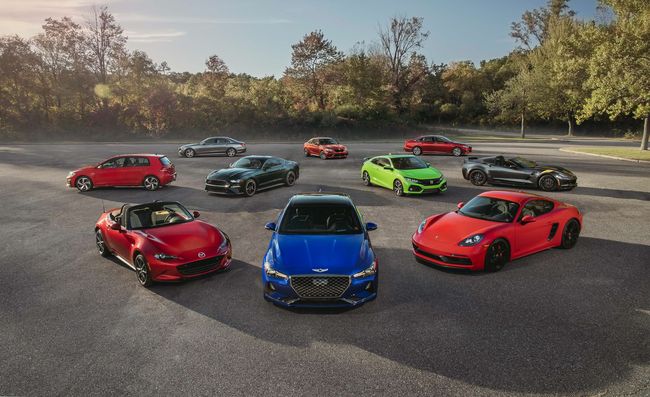基于PyTorch搭建Mask-RCNN实现实例分割
基于PyTorch搭建Mask-RCNN实现实例分割
在这篇文章中,我们将讨论 Mask RCNN Pytorch 背后的理论以及如何在 PyTorch 中使用预训练的 Mask R-CNN 模型。
1. 语义分割、目标检测和实例分割
在之前的博客文章里介绍了语义分割和目标检测(如果感兴趣可以参考以下文章):
- 图像语义分割概述
- Pytorch实现图像语义分割(初体验)
- 基于PyTorch搭建FasterRCNN实现目标检测
- 语义分割:为图像中的每个像素分配一个类标签(例如狗、猫、人、背景等)。
- 目标检测:在对象检测中,我们为包含对象的边界框分配一个类标签。
- 实例分割:将图像中的每个物体分割成独立的实例。
2. Mask R-CNN 架构
Mask R-CNN 的架构是 Faster R-CNN 的扩展。Faster R-CNN 架构具有以下组件
- 卷积层:输入图像经过多个卷积层以创建特征图。
- 区域生成网络(RPN:Region Proposal Network)。卷积层的输出用于训练网络,该网络提出包围对象的区域。
- 分类器:相同的特征图也用于训练分类器,该分类器为框内的对象分配标签。
Faster R-CNN 比 Fast R-CNN 更快,因为特征图计算一次并由 RPN 和分类器重复使用。
Mask R-CNN 将这一想法更进一步。除了将特征图提供给 RPN 和分类器之外,它还用它来预测边界框内对象的二进制掩码。
看待 Mask R-CNN 的掩模预测部分的一种方式是,它是一个用于语义分割的全卷积网络(FCN)。唯一的区别是 FCN 应用于边界框,并且它与 RPN 和分类器共享卷积层。
3. 基于PyTorch搭建Mask R-CNN
3.1 输入和输出
该模型期望输入是形状为 (n, c , h, w) 的张量图像列表,其值范围为 0-1。图像的大小不需要固定。
- n 是图像数
- c 是通道数,对于 RGB 图像,为 3
- h 是图像的高度
- w 是图像的宽度
该模型返回边界框的坐标、模型预测将出现在输入图像中的类标签、标签的分数、标签中存在的每个类的掩码。
3.2 预训练模型
model = torchvision.models.detection.maskrcnn_resnet50_fpn(pretrained=True)
model.eval()
3.3 模型预测
实例分割的标签列表与对象检测任务相同。
COCO_INSTANCE_CATEGORY_NAMES = [
'__background__', 'person', 'bicycle', 'car', 'motorcycle', 'airplane', 'bus',
'train', 'truck', 'boat', 'traffic light', 'fire hydrant', 'N/A', 'stop sign',
'parking meter', 'bench', 'bird', 'cat', 'dog', 'horse', 'sheep', 'cow',
'elephant', 'bear', 'zebra', 'giraffe', 'N/A', 'backpack', 'umbrella', 'N/A', 'N/A',
'handbag', 'tie', 'suitcase', 'frisbee', 'skis', 'snowboard', 'sports ball',
'kite', 'baseball bat', 'baseball glove', 'skateboard', 'surfboard', 'tennis racket',
'bottle', 'N/A', 'wine glass', 'cup', 'fork', 'knife', 'spoon', 'bowl',
'banana', 'apple', 'sandwich', 'orange', 'broccoli', 'carrot', 'hot dog', 'pizza',
'donut', 'cake', 'chair', 'couch', 'potted plant', 'bed', 'N/A', 'dining table',
'N/A', 'N/A', 'toilet', 'N/A', 'tv', 'laptop', 'mouse', 'remote', 'keyboard', 'cell phone',
'microwave', 'oven', 'toaster', 'sink', 'refrigerator', 'N/A', 'book',
'clock', 'vase', 'scissors', 'teddy bear', 'hair drier', 'toothbrush'
]
def get_prediction(img_path, threshold):
img = Image.open(img_path)
transform = T.Compose([T.ToTensor()])
img = transform(img)
pred = model([img])
pred_score = list(pred[0]['scores'].detach().numpy())
pred_t = [pred_score.index(x) for x in pred_score if x > threshold][-1]
masks = (pred[0]['masks'] > 0.5).squeeze().detach().cpu().numpy()
pred_class = [COCO_INSTANCE_CATEGORY_NAMES[i] for i in list(pred[0]['labels'].numpy())]
pred_boxes = [[(int(i[0]), int(i[1])), (int(i[2]), int(i[3]))] for i in list(pred[0]['boxes'].detach().numpy())]
masks = masks[:pred_t + 1]
pred_boxes = pred_boxes[:pred_t + 1]
pred_class = pred_class[:pred_t + 1]
return masks, pred_boxes, pred_class
- 从图像路径获得图像
- 使用 PyTorch 的变换将图像转换为图像张量
- 图像通过模型来获取预测
- 从模型中获取掩模、预测类和边界框坐标,并将软掩模制成二进制(0或1)。示例:猫的部分设为 1,图像的其余部分设为 0。
每个预测对象的蒙版都会从一组 11 种预定义颜色中随机获得颜色,以便在输入图像上可视化蒙版。
def random_colour_masks(image):
colours = [[0, 255, 0],[0, 0, 255],[255, 0, 0],[0, 255, 255],[255, 255, 0],[255, 0, 255],[80, 70, 180],[250, 80, 190],[245, 145, 50],[70, 150, 250],[50, 190, 190]]
r = np.zeros_like(image).astype(np.uint8)
g = np.zeros_like(image).astype(np.uint8)
b = np.zeros_like(image).astype(np.uint8)
r[image == 1], g[image == 1], b[image == 1] = colours[random.randrange(0, 10)]
coloured_mask = np.stack([r, g, b], axis=2)
return coloured_mask
3.4 实例分割
def instance_segmentation_api(img_path, threshold=0.5, rect_th=3, text_size=3, text_th=3):
masks, boxes, pred_cls = get_prediction(img_path, threshold)
img = cv2.imread(img_path)
img = cv2.cvtColor(img, cv2.COLOR_BGR2RGB)
for i in range(len(masks)):
rgb_mask = random_colour_masks(masks[i])
img = cv2.addWeighted(img, 1, rgb_mask, 0.5, 0)
cv2.rectangle(img, boxes[i][0], boxes[i][1],color=(0, 255, 0), thickness=rect_th)
cv2.putText(img,pred_cls[i], boxes[i][0], cv2.FONT_HERSHEY_SIMPLEX, text_size, (0, 255, 0), thickness=text_th)
plt.figure(figsize=(20,30))
plt.imshow(img)
plt.xticks([])
plt.yticks([])
plt.show()
- 掩码、预测类和边界框通过 get_prediction 获得。
- 每个蒙版都从 11 种颜色中随机选择一种颜色。
- 使用 OpenCV 将每个掩模以 1:0.5 的比例添加到图像中。
- 使用 cv2.rectangle 绘制边界框,并将类名注释为文本。
显示最终输出
3.5 运行测试
3.6 完整代码
import random
import torchvision
from PIL import Image
from torchvision import transforms as T
import numpy as np
import cv2
from matplotlib import pyplot as plt
model = torchvision.models.detection.maskrcnn_resnet50_fpn(pretrained=True)
model.eval()
COCO_INSTANCE_CATEGORY_NAMES = [
'__background__', 'person', 'bicycle', 'car', 'motorcycle', 'airplane', 'bus',
'train', 'truck', 'boat', 'traffic light', 'fire hydrant', 'N/A', 'stop sign',
'parking meter', 'bench', 'bird', 'cat', 'dog', 'horse', 'sheep', 'cow',
'elephant', 'bear', 'zebra', 'giraffe', 'N/A', 'backpack', 'umbrella', 'N/A', 'N/A',
'handbag', 'tie', 'suitcase', 'frisbee', 'skis', 'snowboard', 'sports ball',
'kite', 'baseball bat', 'baseball glove', 'skateboard', 'surfboard', 'tennis racket',
'bottle', 'N/A', 'wine glass', 'cup', 'fork', 'knife', 'spoon', 'bowl',
'banana', 'apple', 'sandwich', 'orange', 'broccoli', 'carrot', 'hot dog', 'pizza',
'donut', 'cake', 'chair', 'couch', 'potted plant', 'bed', 'N/A', 'dining table',
'N/A', 'N/A', 'toilet', 'N/A', 'tv', 'laptop', 'mouse', 'remote', 'keyboard', 'cell phone',
'microwave', 'oven', 'toaster', 'sink', 'refrigerator', 'N/A', 'book',
'clock', 'vase', 'scissors', 'teddy bear', 'hair drier', 'toothbrush'
]
def get_prediction(img_path, threshold):
img = Image.open(img_path)
transform = T.Compose([T.ToTensor()])
img = transform(img)
pred = model([img])
pred_score = list(pred[0]['scores'].detach().numpy())
pred_t = [pred_score.index(x) for x in pred_score if x > threshold][-1]
masks = (pred[0]['masks'] > 0.5).squeeze().detach().cpu().numpy()
pred_class = [COCO_INSTANCE_CATEGORY_NAMES[i] for i in list(pred[0]['labels'].numpy())]
pred_boxes = [[(int(i[0]), int(i[1])), (int(i[2]), int(i[3]))] for i in list(pred[0]['boxes'].detach().numpy())]
masks = masks[:pred_t + 1]
pred_boxes = pred_boxes[:pred_t + 1]
pred_class = pred_class[:pred_t + 1]
return masks, pred_boxes, pred_class
def random_colour_masks(image):
colours = [[0, 255, 0],[0, 0, 255],[255, 0, 0],[0, 255, 255],[255, 255, 0],[255, 0, 255],[80, 70, 180],[250, 80, 190],[245, 145, 50],[70, 150, 250],[50, 190, 190]]
r = np.zeros_like(image).astype(np.uint8)
g = np.zeros_like(image).astype(np.uint8)
b = np.zeros_like(image).astype(np.uint8)
r[image == 1], g[image == 1], b[image == 1] = colours[random.randrange(0, 10)]
coloured_mask = np.stack([r, g, b], axis=2)
return coloured_mask
def instance_segmentation_api(img_path, threshold=0.5, rect_th=3, text_size=3, text_th=3):
masks, boxes, pred_cls = get_prediction(img_path, threshold)
img = cv2.imread(img_path)
img = cv2.cvtColor(img, cv2.COLOR_BGR2RGB)
for i in range(len(masks)):
rgb_mask = random_colour_masks(masks[i])
img = cv2.addWeighted(img, 1, rgb_mask, 0.5, 0)
cv2.rectangle(img, boxes[i][0], boxes[i][1],color=(0, 255, 0), thickness=rect_th)
cv2.putText(img,pred_cls[i], boxes[i][0], cv2.FONT_HERSHEY_SIMPLEX, text_size, (0, 255, 0), thickness=text_th)
plt.figure(figsize=(20,30))
plt.imshow(img)
plt.xticks([])
plt.yticks([])
plt.show()
instance_segmentation_api('../img/cars.jpg')


